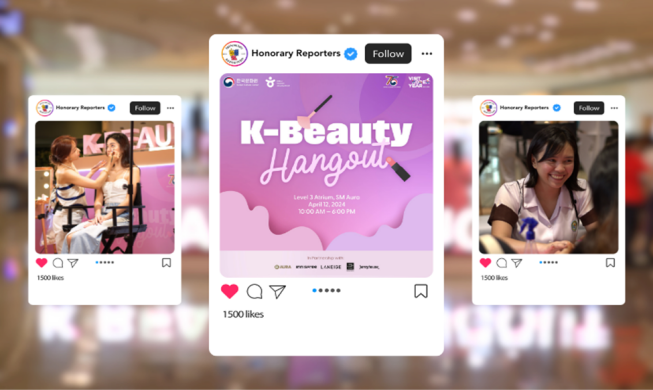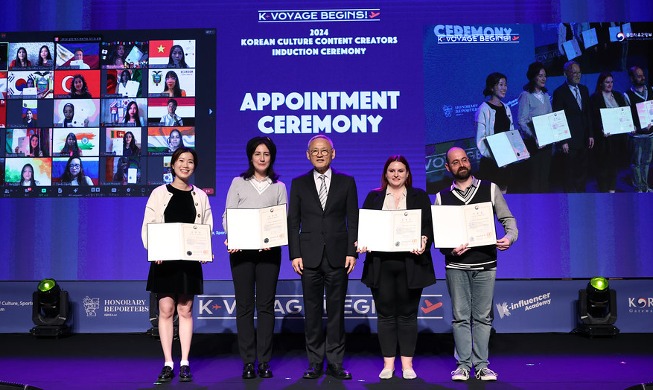-
 Korea.net's 24-hour YouTube channel
Korea.net's 24-hour YouTube channel- NEWS FOCUS
- ABOUT KOREA
- EVENTS
- RESOURCES
- GOVERNMENT
- ABOUT US
- 한국어
- English
- 日本語
- 中文
- العربية
- Español
- Français
- Deutsch
- Pусский
- Tiếng Việt
- Indonesian
Tongdo-sa (통도사) is one of the Three Jewel Temples of Korean Buddhism. Like Songgwang-sa and Haein-sa, the two other Jewel temples, this temple is situated in the south of Korea.
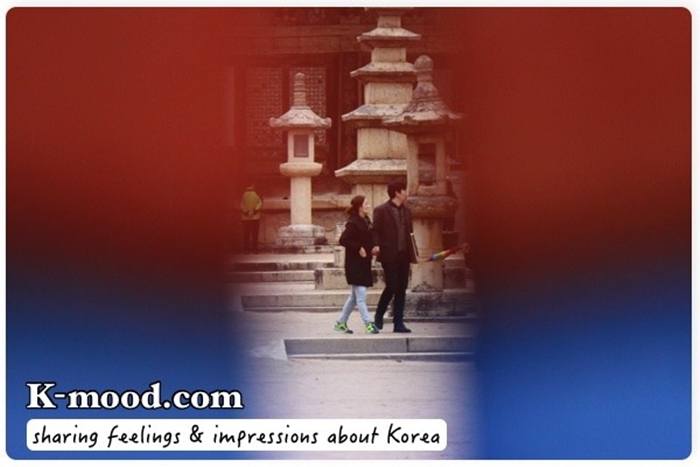
On Dale`s temple website Tongdosa is rated 10/10, worth to pay a visit we thought.
So on Easter Sunday in April 2015 we to visited this temple which is located in Yangsan, a city halfway between Ulsan and Busan.
The weather forecast didn't seem really good, cloudy all day but dry. During the car ride to Yangsan we were not only stunned by thousands of beautiful blooming cherry trees along the road but also by the signs of the many temples around here. No wonder, since this is the birthplace of Silla dynasty.
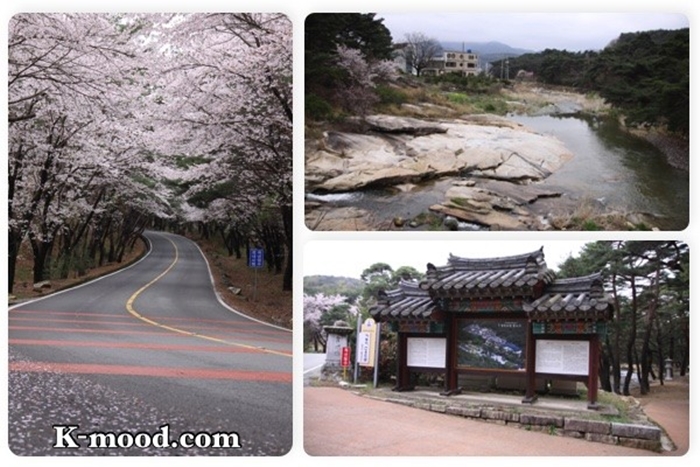
We parked our car at the first parking lot where we also purchased an entrance ticket. Entrance tickets for Korean temples are always very cheap, in this case 3.000₩ per person. Yangsan residents have free access to the temple.
We also had the option to drive through the first gate and park nearby the temple but we decided to follow the path near the river. A sign along the path tells you that there are like 19 hermitages near Tongdosa.
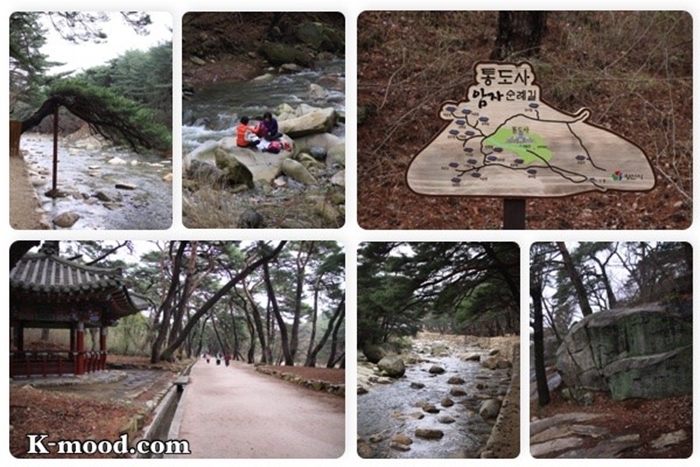
The path leads us through the forest of dancing pines. Old giant and curved pine trees, among them many red pine trees (Pinus densiflora), decorate the path. Because of the rain the night before the pine trees spread a refreshing scent which was a good opportunity to purify our lungs.
One hour later we arrived at the Iljumun or first gate. It normally takes only 20 to 30 minutes to get here. On our way we noticed some huge rocks with ancient Chinese Buddhist inscriptions.
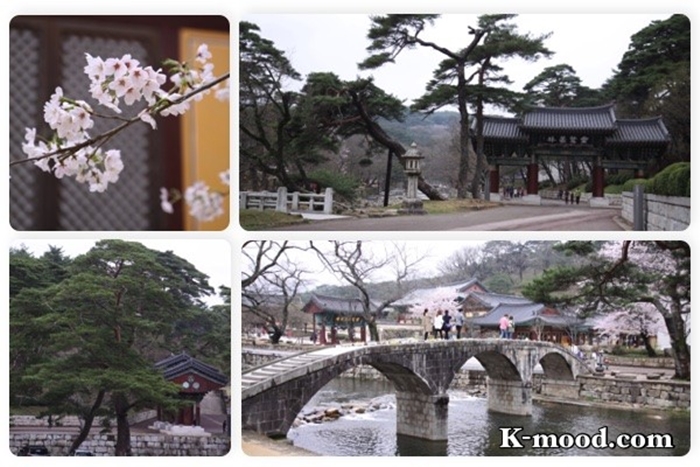
Despite the chilly weather it was quite busy at the temple, I guess there were more than 200 cars at the parking lot. Many people came here to enjoy the beautiful cherry blossoms and the first signs of spring.
Knowing that we can easily spend a couple of hours at a temple complex we decided to have lunch first at the local restaurant. We ordered sanchae bibimbap (산채 비빔밥 – rice mixed with vegetables), typically Korean temple food. After we left the restaurant we crossed the bridge over the stream.
Tongdo-sa is Korea`s largest temple founded in 664 CE during Silla dynasty. The famous monk Jajang brought relics and robes from the Buddha from China to Korea and enshrined them here. Therefor Tongdosa is known as the first of the 3 Jewel temples and the temple is considered as the home of Korean Buddhism.
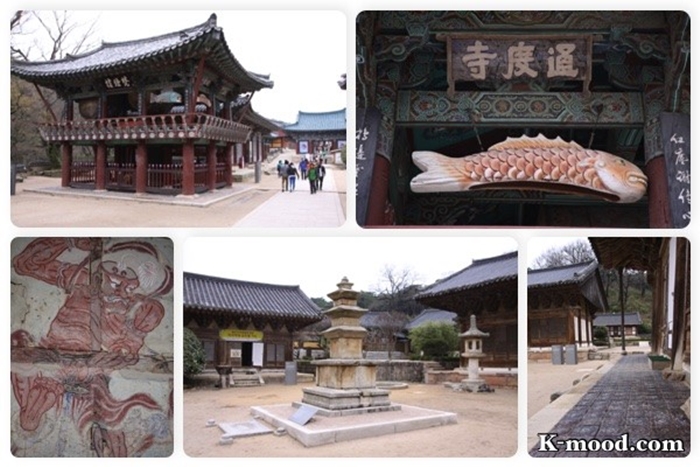
We passed the Sacheongwang-mun, (사천왕문) where we bowed to the 4 Heavenly Kings (1 for each direction, South, North, East & West). As soon as we entered the outer courtyard we were immediately impressed by the gracious old buildings, one dedicated to Amita-bul, the Buddha of compassion, and another one to Yaksa-bul, the medicine Buddha.
I was surprised to see that the Bell Pavillon houses two bells, a big and a small one, and also two wooden fish. There were many people and shooting pictures without people in the frame was a difficult job and required some patience.
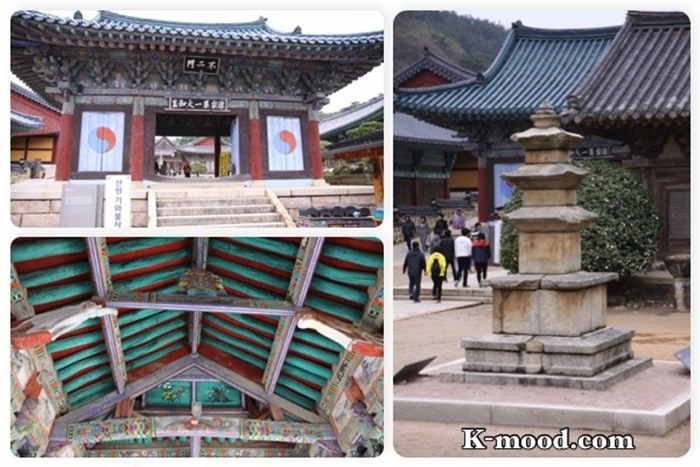
We continued our path to the next gate, the Buli-mun (불이문), where our attention was drawn by the nicely painted Um Yang sign, reflecting the non-duality. Here we entered the inner courtyard and the spiritual realm of the temple. On the decorated ceiling we spotted two nice wooden sculptures of an elephant and a tiger.
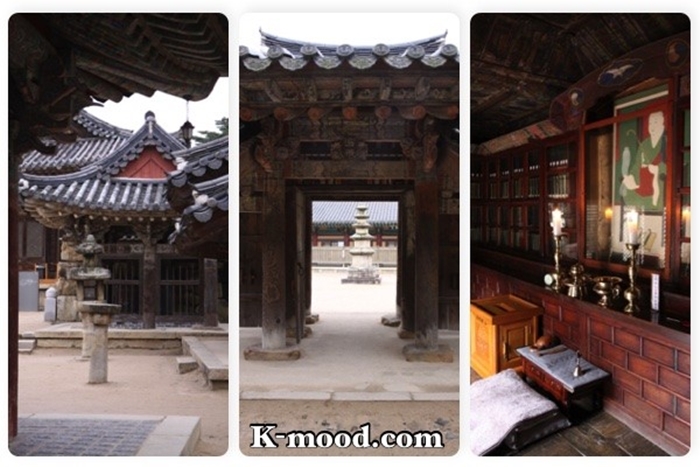
Since there are no outdoor Buddha statues at this temple Tongdosa is also known as the temple without a Buddha. But the smaller buildings and halls in this courtyard are dedicated to the different Buddha`s and Boddhisattvas.
One of the small buildings in front of the stone pagoda is dedicated to the monk Jajang who founded the temple. This hall looks like a small library showing a big number of books next to Jajang`s painting.
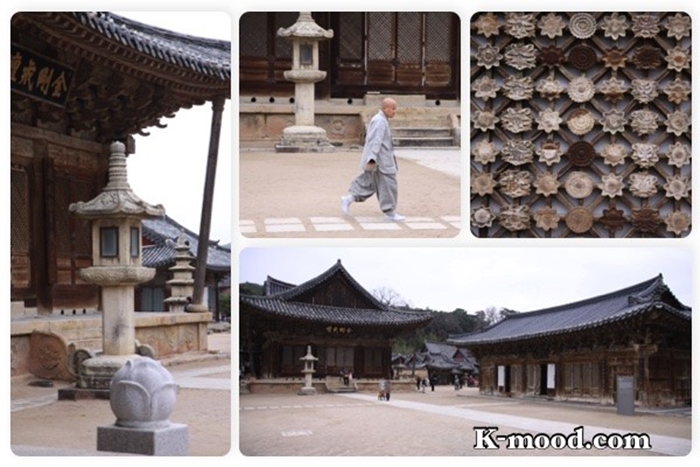
Tongdosa has a unique Daeung-jeon (대웅전) or Main Dharma Hall, which is National Treasure #290. Other Main Dharma Halls normally display a statue of Seokgamoni-bul or the historical Buddha, but not here. There are also no pictures of the Buddha or Boddhisattvas like they normally can be found in a worship hall.
Behind the altar where the Buddha statue normally has its place, you can see a large window that offers a view on the Geumgang Gyedan or Diamond Altar, where the Sari Jinsin (Buddha’s relics) are enshrined.
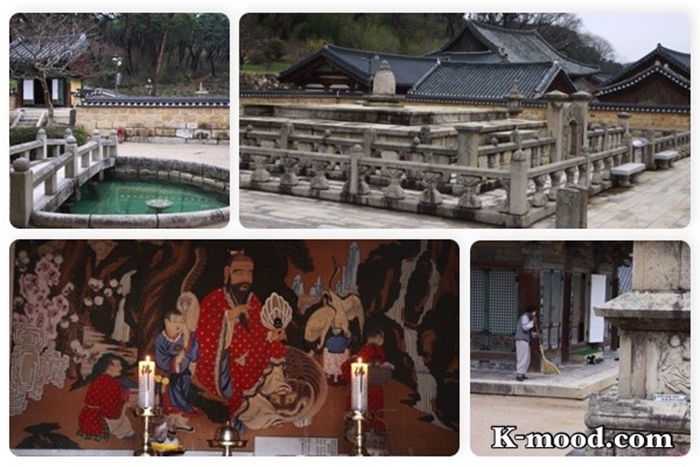
Next to the Main Dharma hall, you can see a small pond. The legend tells that monk Jajang had to drive nine dragons from the pond before he could build the temple. One of the dragons begged him to stay there. Being thankful, the dragon promised to protect the temple against all kind of evil.
As usual we also visited the Chilseongdang (칠성당), a small hall dedicated to the Sanshin or mountain spirit, who is often displayed accompanied by a kind of tiger. We donated a small money gift here and bowed for good luck.
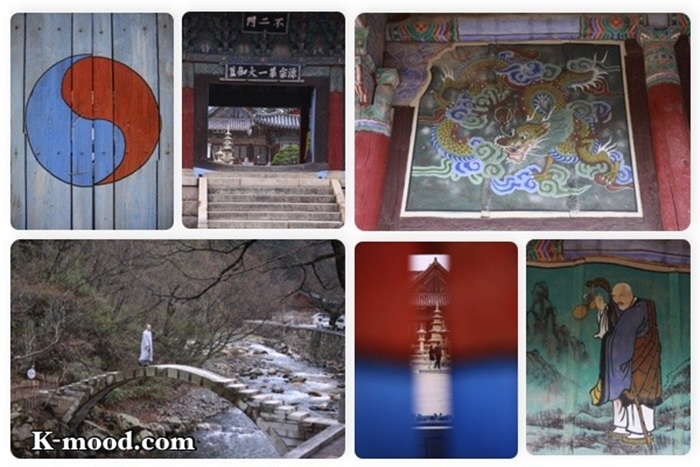
Walking around at this temple complex makes you forget time easily.
It was almost 6 pm when we realized that many people already had left the temple.
On our way back to the entrance we noticed some very interesting paintings on the outside of the buildings.
The Sungbo Museum, near the river, contains world`s largest and finest collection of Buddhist paintings, totally more than 600. Unfortunately there was no time left to visit this museum.
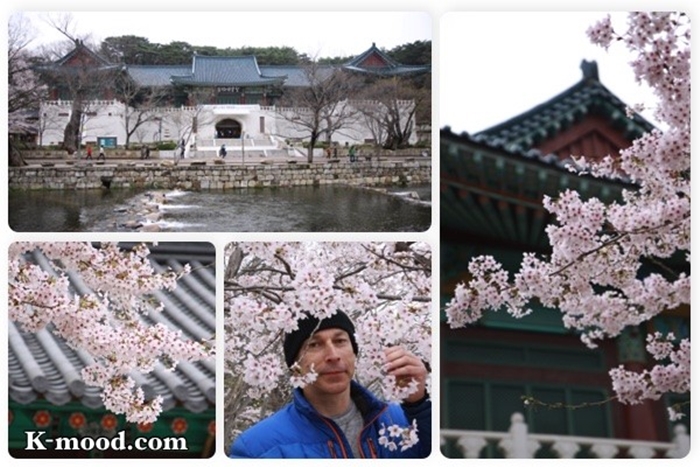
Lastly we enjoyed the cherry blossoms. They probably would have gone next week… everything is impermanent!
Tongdosa had made a great impression on us and I wonder why it took me so long before I visited this amazing place. This place is absolutely worth a trip to the south and can be easily combined with other temples or hermitages. Make sure you take your time to see many things that you can’t find at other Korean temples. They are not all the same!
Look here for more pictures of Tongdosa : FLICKR.COM/K-MOOD
By Guy Kusters for the Korea Blog



